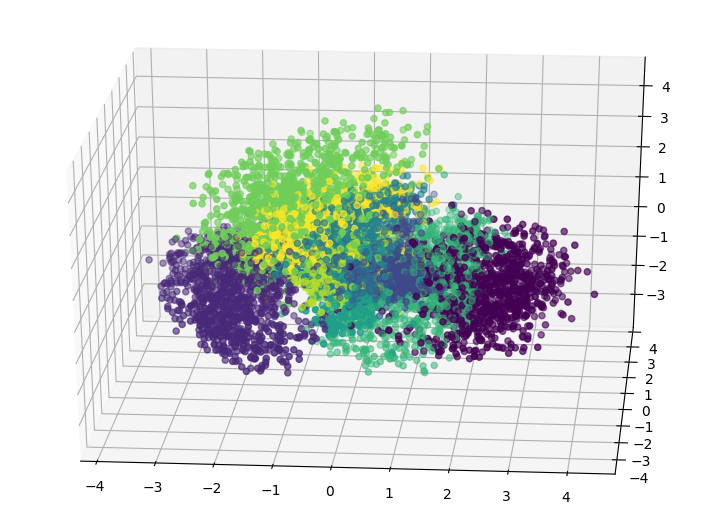chaitanya100100 / Vae For Image Generation
Licence: mit
Implemented Variational Autoencoder generative model in Keras for image generation and its latent space visualization on MNIST and CIFAR10 datasets
Stars: ✭ 87
Programming Languages
python
139335 projects - #7 most used programming language
Projects that are alternatives of or similar to Vae For Image Generation
soft-intro-vae-pytorch
[CVPR 2021 Oral] Official PyTorch implementation of Soft-IntroVAE from the paper "Soft-IntroVAE: Analyzing and Improving Introspective Variational Autoencoders"
Stars: ✭ 170 (+95.4%)
Mutual labels: vae, image-generation, variational-autoencoder
Tensorflow Generative Model Collections
Collection of generative models in Tensorflow
Stars: ✭ 3,785 (+4250.57%)
Mutual labels: generative-model, vae, variational-autoencoder
Vae protein function
Protein function prediction using a variational autoencoder
Stars: ✭ 57 (-34.48%)
Mutual labels: generative-model, vae, variational-autoencoder
Awesome Vaes
A curated list of awesome work on VAEs, disentanglement, representation learning, and generative models.
Stars: ✭ 418 (+380.46%)
Mutual labels: generative-model, vae, variational-autoencoder
srVAE
VAE with RealNVP prior and Super-Resolution VAE in PyTorch. Code release for https://arxiv.org/abs/2006.05218.
Stars: ✭ 56 (-35.63%)
Mutual labels: generative-model, vae, variational-autoencoder
Deepnude An Image To Image Technology
DeepNude's algorithm and general image generation theory and practice research, including pix2pix, CycleGAN, UGATIT, DCGAN, SinGAN, ALAE, mGANprior, StarGAN-v2 and VAE models (TensorFlow2 implementation). DeepNude的算法以及通用生成对抗网络(GAN,Generative Adversarial Network)图像生成的理论与实践研究。
Stars: ✭ 4,029 (+4531.03%)
Mutual labels: vae, image-generation
Disentangling Vae
Experiments for understanding disentanglement in VAE latent representations
Stars: ✭ 398 (+357.47%)
Mutual labels: vae, variational-autoencoder
Generating Devanagari Using Draw
PyTorch implementation of DRAW: A Recurrent Neural Network For Image Generation trained on Devanagari dataset.
Stars: ✭ 82 (-5.75%)
Mutual labels: generative-model, image-generation
Generative Models
Collection of generative models, e.g. GAN, VAE in Pytorch and Tensorflow.
Stars: ✭ 6,701 (+7602.3%)
Mutual labels: generative-model, vae
Neuraldialog Cvae
Tensorflow Implementation of Knowledge-Guided CVAE for dialog generation ACL 2017. It is released by Tiancheng Zhao (Tony) from Dialog Research Center, LTI, CMU
Stars: ✭ 279 (+220.69%)
Mutual labels: generative-model, variational-autoencoder
Tensorflow Mnist Vae
Tensorflow implementation of variational auto-encoder for MNIST
Stars: ✭ 422 (+385.06%)
Mutual labels: vae, variational-autoencoder
Attend infer repeat
A Tensorfflow implementation of Attend, Infer, Repeat
Stars: ✭ 82 (-5.75%)
Mutual labels: generative-model, vae
Pytorch Rl
This repository contains model-free deep reinforcement learning algorithms implemented in Pytorch
Stars: ✭ 394 (+352.87%)
Mutual labels: vae, variational-autoencoder
Simple Variational Autoencoder
A VAE written entirely in Numpy/Cupy
Stars: ✭ 20 (-77.01%)
Mutual labels: generative-model, variational-autoencoder
Texturize
🤖🖌️ Generate photo-realistic textures based on source images. Remix, remake, mashup! Useful if you want to create variations on a theme or elaborate on an existing texture.
Stars: ✭ 366 (+320.69%)
Mutual labels: generative-model, image-generation
Sentence Vae
PyTorch Re-Implementation of "Generating Sentences from a Continuous Space" by Bowman et al 2015 https://arxiv.org/abs/1511.06349
Stars: ✭ 462 (+431.03%)
Mutual labels: generative-model, vae
Variational Autoencoder
PyTorch implementation of "Auto-Encoding Variational Bayes"
Stars: ✭ 25 (-71.26%)
Mutual labels: vae, variational-autoencoder
S Vae Pytorch
Pytorch implementation of Hyperspherical Variational Auto-Encoders
Stars: ✭ 255 (+193.1%)
Mutual labels: vae, variational-autoencoder
Generative models tutorial with demo
Generative Models Tutorial with Demo: Bayesian Classifier Sampling, Variational Auto Encoder (VAE), Generative Adversial Networks (GANs), Popular GANs Architectures, Auto-Regressive Models, Important Generative Model Papers, Courses, etc..
Stars: ✭ 276 (+217.24%)
Mutual labels: generative-model, variational-autoencoder
VAE for Image Generation
Variational AutoEncoder - Keras implementation on mnist and cifar10 datasets
Dependencies
- keras
- tensorflow / theano (current implementation is according to tensorflow. It can be used with theano with few changes in code)
- numpy, matplotlib, scipy
implementation Details
code is highly inspired from keras examples of vae : ,
(source files contains some code duplication)
MNIST
- images are flatten out to treat them as 1D vectors
- encoder and decoder - both have normal neural network architecture
| network architecture |
|---|
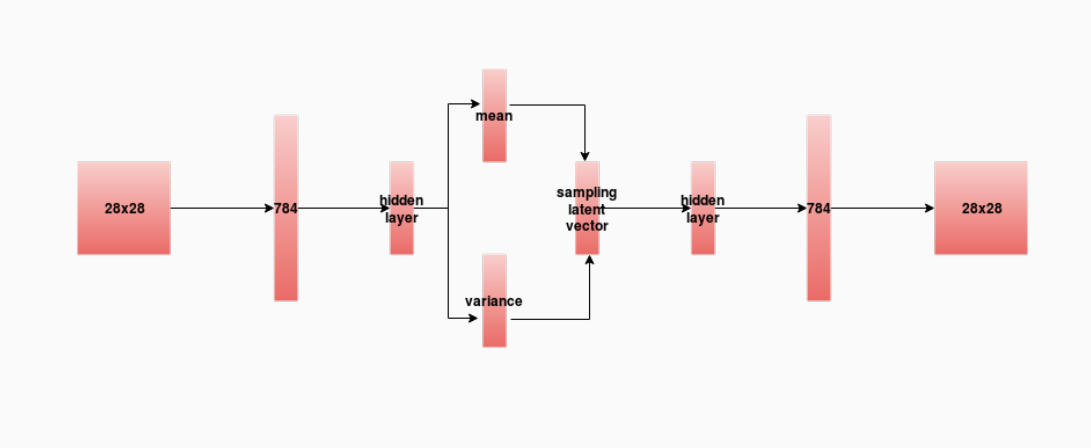 |
- it trains vae model according to the hyperparameters defined in
- entire vae model, encoder and decoder is stored as keras models in
directory as
ld_<latent_dim>_id_<intermediate_dim>_e_<epochs>_<vae/encoder/decoder>.h5where<latent_dim>is number of latent dimensions,<intermediate_dim>is number of neurons in hidden layer and<epochs>is number of training epochs - after training, the saved model can be used to analyse the latent distribution and to generate new images
- it also stores the training history in
ld_<latent_dim>_id_<intermediate_dim>_e_<epochs>_history.pkl
- it is only for 2 dimensional latent space
- it loads trained model according to the hyperparameters defined in
mnist_params.py - it displays the latent space distribution and then generates the images according to user input of latent variables (see the code as it is almost self-explanatory)
- it can also generate images from latent vectors randomly sampled from 2D latent space (comment out the user input lines) and display them in a grid
- it is same as
mnist_2d_latent_space_and_generate.pybut it is for 3d latent space
- it loads trained model according to the hyperparameters defined in
mnist_params.py - if latent space is either 2D or 3D, it displays it
- it displays a grid of images generated from randomly sampled latent vectors
results
2D latent space
| latent space | uniform sampling |
|---|---|
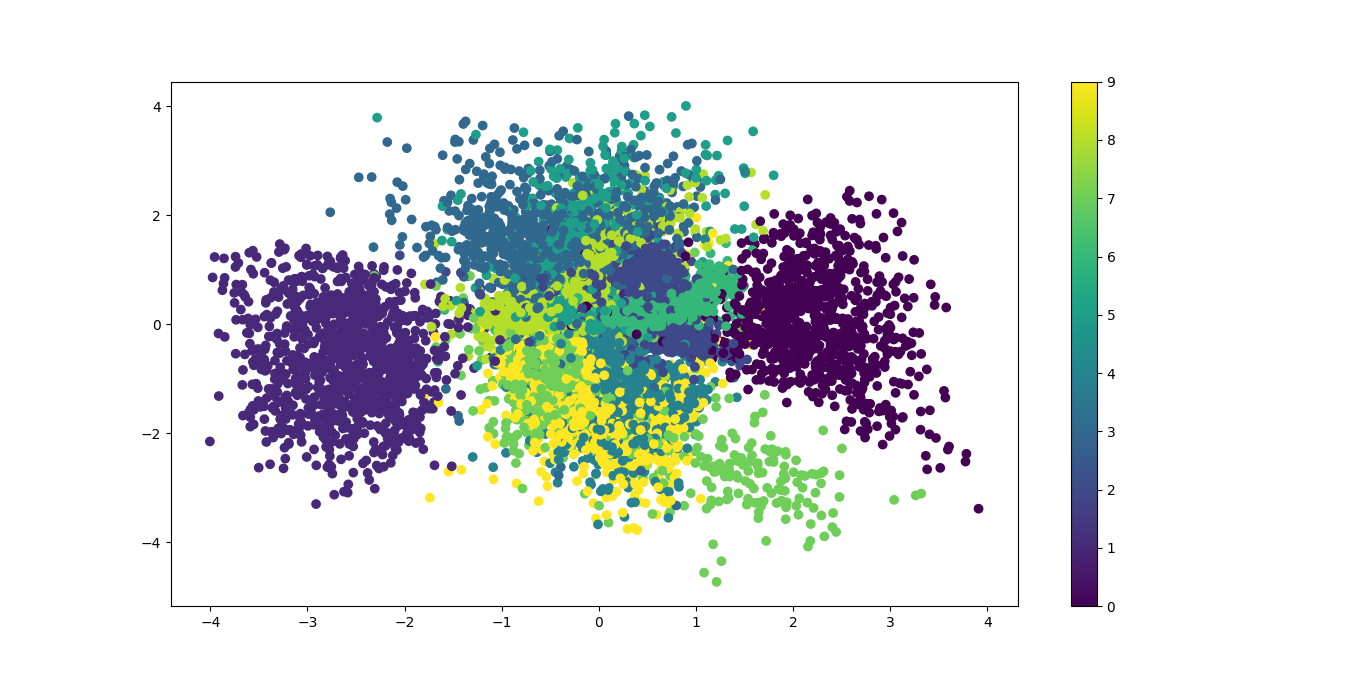 |
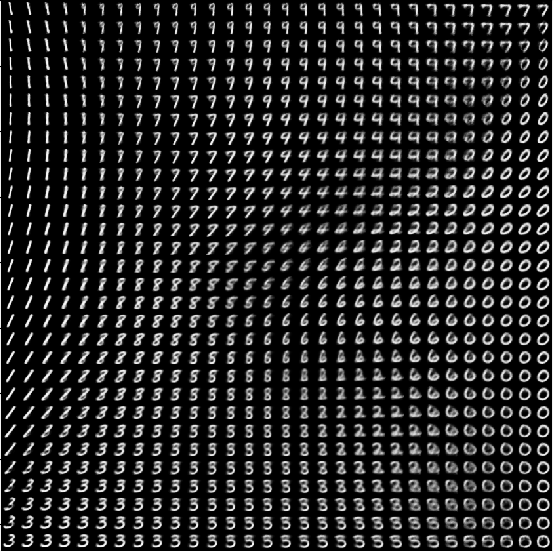 |
3D latent space
3D latent space results
| uniform sampling | random sampling |
|---|---|
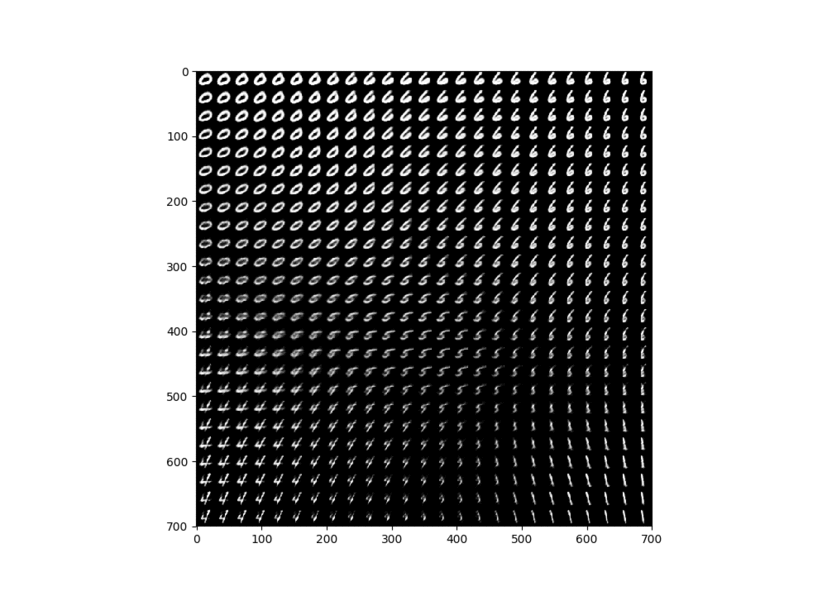 |
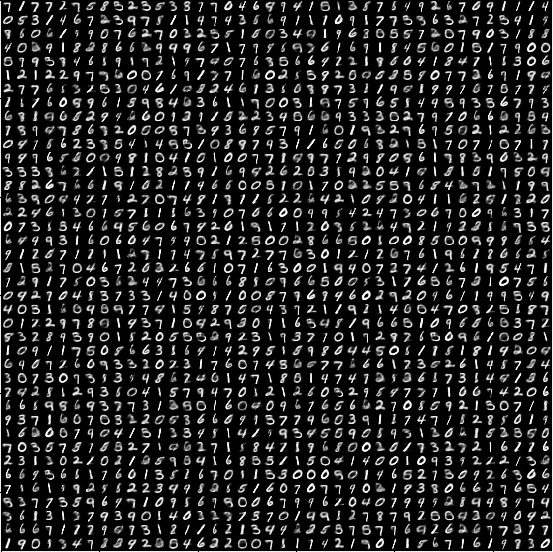 |
CIFAR10
- images are treated as 2D input
- encoder has the architecture of convolutional neural network and decoder has the architecture of deconvolutional network
- network architecture for encoder and decoder are as follows
| encoder |
|---|
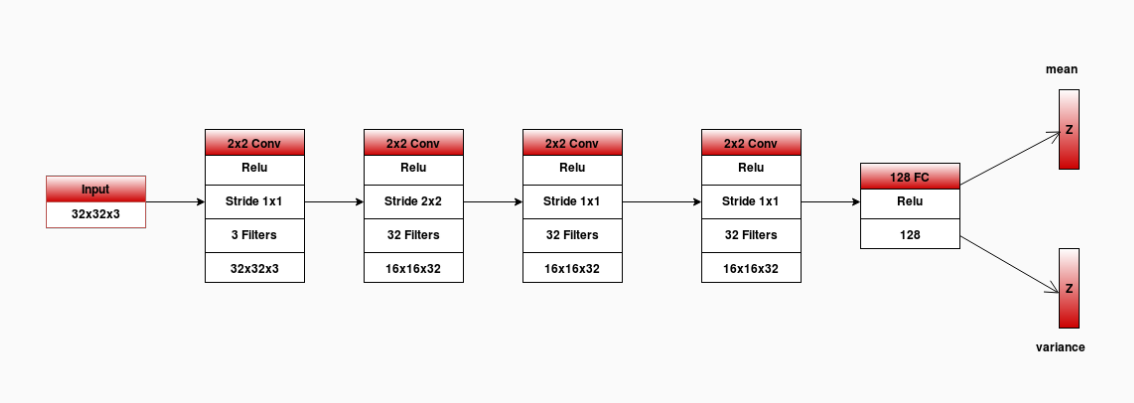 |
| decoder |
|---|
 |
 ,
, 
implementation structure is same as mnist files
result - latent dimensions 16
| 25 epochs | 50 epochs | 75 epochs |
|---|---|---|
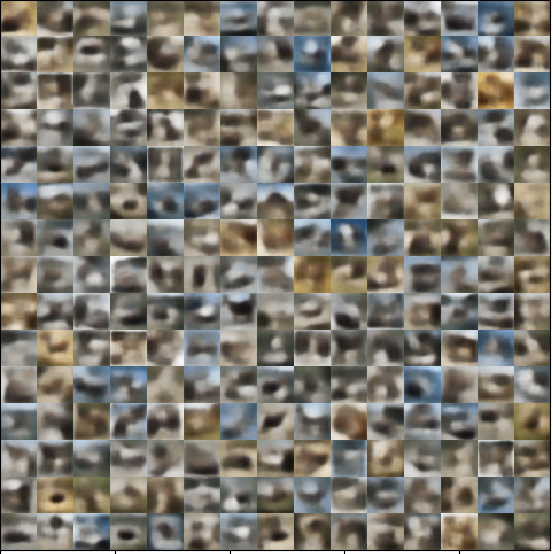 |
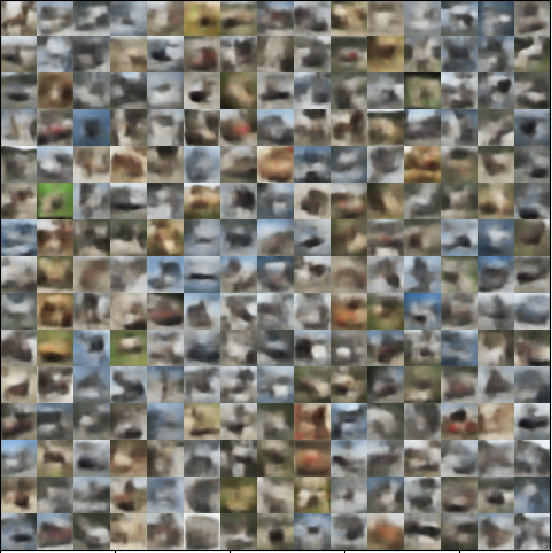 |
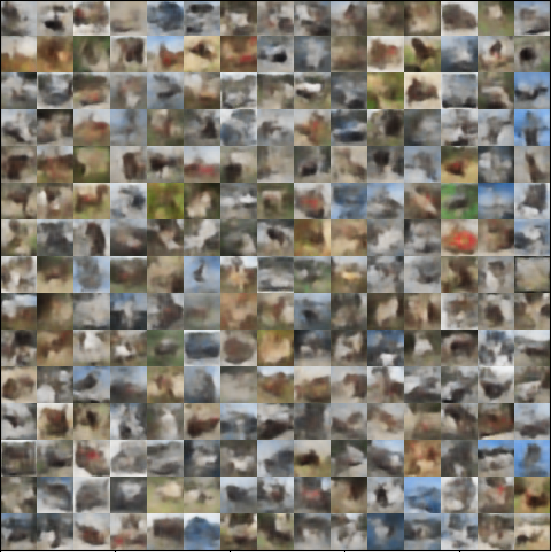 |
| 600 epochs |
|---|
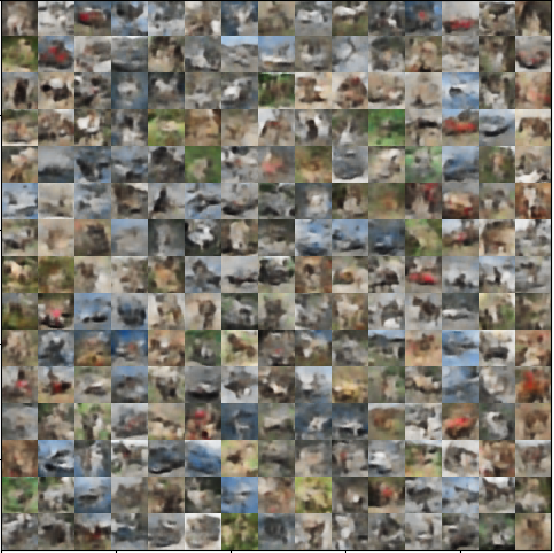 |
CALTECH101
-
caltech101_<sz>_train.pyandcaltech101_<sz>_generate.py(whereszis the size of input image - here the training was done for two sizes - 92*92 and 128*128) are same as cifar10 dataset files - as the image size is large, more computation power is needed to train the model
- results obtained with less training are qualitatively not good
- in
datasetdirectory,is provided to preprocess the dataset
Note that the project description data, including the texts, logos, images, and/or trademarks,
for each open source project belongs to its rightful owner.
If you wish to add or remove any projects, please contact us at [email protected].

